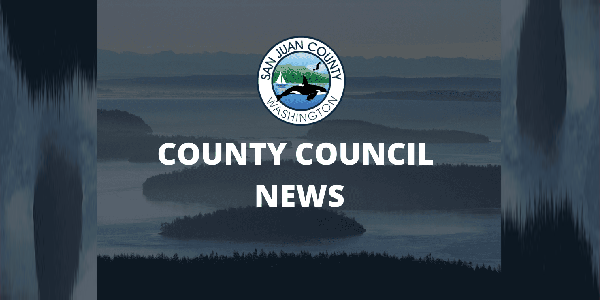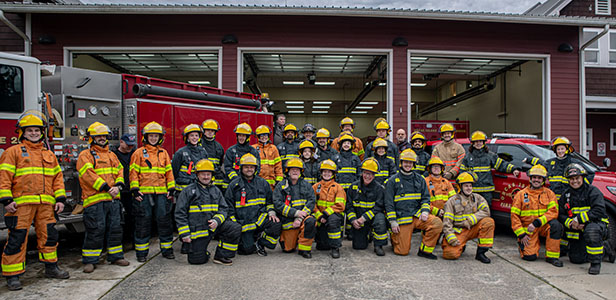— from Salish Current —

By Genevieve Iverson
— On a regular summer-schedule day, a full Washington State Ferries (WSF) vessel approaches the Friday Harbor terminal, efficiently unloads walk-on passengers and cars, and reloads new riders for the return trip in around 35–40 minutes. This is “dwell time,” and it is factored into the overall arrival and departure schedule for the day to keep ferries running on time.
Currently, several COVID-shutdown related factors require WSF to continue running on a limited schedule even as summer travel increases, creating travel delays and raising as-yet unanswerable questions about when things may change.
Routes from Anacortes to the San Juan Islands are on an extended winter, or “baseline,” schedule. This means that the island routes are working with reduced loads on just three vessels from Anacortes daily, compared to five fully crewed boats per the regular summer schedule.
“In the dead of winter [three boats] is completely adequate,” said Jim Corenman, chair of the San Juan County Ferries Advisory Committee, during a county council meeting on June 30. “But with [increased] traffic levels, there are issues. The dwell times are too short, and they’re going to run late. We’ve seen it every day this week.”
Winter traffic is much lower than spring and summer loads, Corenman said, and the allotted time doesn’t match up to increased summer ridership. Winter schedule allows for only 15–20 minutes of dwell time at each stop over, based on the half to two-thirds ridership in winter months.
San Juan County is currently in a modified Phase 2 of Gov. Inslee’s COVID Safe Start plan, which limits nonessential travel. However, lodging on the islands is open to 50% capacity, and the San Juan Islands Visitor Bureau is encouraging tourism. Increased travel to the islands as summer resumes means more strain on the extended winter schedule that is offered.
Riders, crew, vessels, funding
“We have the plan to add service, but all four [factors] have to be met first,” said Ian Sterling, public information officer for WSF. These factors are the system’s “four pillars of service”: ridership, available crew, vessels and funding. Until all four meet a suitable standard, the ferry system will not be able to return to the level of service users are used to, he said.
“We are essentially holding where we are in our service scenario until those factors either rebound or we receive new direction from … the governor,” said Amy Scarton, head of WSF, during a virtual community meeting on June 30.
Currently, 150 crew members of the vessels are considered “high-risk” for COVID-19 and won’t return to work until Safe Start Phase 4.
Many of the counties served by WSF are in early-stage phases, with nonessential travel limited and no certain dates on when they will advance. Progress in all counties to Phase 4 is currently on pause. San Juan County remains on modified Phase 2 with a pause on Phase 3.
“We had a case a couple weekends ago where they had to tie up a boat on a Friday because they simply did not have enough crew to staff it,” said Corenman. Available crew was distributed among the remaining two boats to travel from Anacortes to the San Juans.
When a ferry is canceled and schedules are shuffled, reservations take a hit, Corenman said. All reservations were canceled that day and turned to first-come-first-serve.
Essential travel
With nonessential travel discouraged, many island residents only leave the island for necessary trips, like medical appointments. That’s the case for Steve Horn, longtime resident of Lopez Island.
“If it gets to where you can’t get off the island every day, that will be problematic,” said Horn. But Horn notes that during a crisis, quick fixes aren’t readily available.
“I’ll take whatever I can get,” Horn said. “If I have to wait longer, I’ll wait longer. I’ll get there earlier. As long as they run at least one a day, I’ll probably be OK.”
Trish Lehman, resident of Friday Harbor, has also experienced delays when commuting off for doctor appointments. On a July 1 ferry, Lehman saw an increased ridership compared to non-holiday weeks. But for Lehman, late ferries aren’t a big enough reason to postpone or cancel a trip.
“Unfortunately, [delays] seem to have been a pattern for the last couple of summers compared to years past,” Lehman said. “I’ve come to expect it.”
Fewer travelers, less revenue
Extended winter schedule became the baseline in March when WSF saw a 75% decrease in ridership, Scarton said. As of June, the ferries remain at around 51% less traffic. The Anacortes to Sidney, B.C., route remains canceled until the border opens again — currently expected no earlier than July 31.
Lack of travelers affects fare revenues that are important for funding vessel traffic. About 75% of the WSF operating budget comes from ticket revenue, Scarton said.
But as ridership goes back up, WSF can’t move forward with increased service while other factors continue to remain stagnant.
“Ridership demand has gone up, but funding has gone down and crew availability is what is getting [missed] in the short term,” Sterling said.
And of the 19 vessels that are usually used for a normal summer service in the Puget Sound, five remain out of commission. These five vessels required annual winter maintenance but did not receive them when the Eagle Harbor Maintenance Facility was closed during statewide shutdowns, Scarton said.
“We simply cannot increase service without those vessels,” said Scarton.
The extended outlook remains unclear. Schedule suggestions from San Juan County have been made, but there still aren’t enough crew members to make them happen at the moment, Corenman said. Washington State Ferries will not operate on regular schedules until Phase 4 at the soonest, when high-risk crew members can return to work on vessels.

Genevieve Iverson was born, raised and currently resides on San Juan Island. She studied journalism and creative writing at Western Washington University, and is an avid sailor in the Salish Sea.
**If you are reading theOrcasonian for free, thank your fellow islanders. If you would like to support theOrcasonian CLICK HERE to set your modestly-priced, voluntary subscription. Otherwise, no worries; we’re happy to share with you.**








Seeing as WSF knows that the ferries will be late because they are not being allotted enough “dwell” time they need to end the rule of being there 30 minutes prior to scheduled sailing time when we know the ferry is running 2 hours late. When you make a reservation and expect to have 3 hours to run errands but the boat going over is 90 minutes late that just cut your time to do what you went for. Only to come back and sit for 2 hours unnecessarily. Or do what I did and complete my errands and then get turned away from the landing at 9:15 even though I had a reservation for the 9:05 sailing that didn’t leave Anacortes until 10:46. I was there an hour and a half before the actual sailing and was denied and had to wait until morning to come home.
Great explanation of the 2020 summer ferry woes! Thank you, Ms. Iverson.
Could you clarify a point? For a given sailing, say from Anacortes to Orcas, I assume the boarding priority is: 1. Vehicles on time for the reserved sailing and “emergency” vehicles; 2. Vehicles waiting due to not enough space on previous sailings; 3. Other Vehicles, if space allows, including those late for their scheduled sailing.
Our car died. It is under warranty and must go to Burlington. I called last week for a tow and was told the first available day with ferry reservations available for the tow truck was a week later–this Friday! I understand the impact of COVID-19, but this is not really related to that–it’s tourist season traffic.
Washington State Ferries needs to install adequate signage at the ticketing booths saying non-essential travel is not permitted. As
Dr. James said the non-essential travel is not being enforced or even communicated which puts island residents at risk.